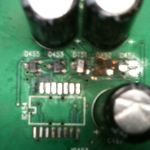Hi,
One for the tech heads among us (JR ?)
Two questions:
On a console route a signal on channel 1 to Aux 1, then the output of aux 1 back into the console on say channel 2. Turn up the aux 1 on this channel to create a feedback loop.
The signal is for all intents and purposes unusable because of the feedback, but can this cause component damage in the console ? Ie increasing voltage ?
Second question is what i'm really interested in though: Turn down aux1 on the second channel to remove feedback and now turn on phantom power. Or, with phantom power on, repeatedly plug in/out of channel 2. This has the effect of sending 48v DC to the Aux 1 output plug on the console.
Can this cause component damage to the output stage ?
The same situation could occur when one auxillary or output of one console is fed into an input of another console.
I've got a repair tech who says it can on my midas verona. I'm not doubting him but wondering if this is a common situation; are components usually designed to withstand 48 volts being fed to it ?
When I see the tech i'm also going to ask if this is the possible cause of my helix eq failing badly. The gig where it failed was one where my gear was setup by someone else and I noticed (but didn't think anything of it at the time) that the output of one helix channel was plugged into an input of the console; and the corresponding aux output went straight to stage rather than through the eq.
Andrew
One for the tech heads among us (JR ?)
Two questions:
On a console route a signal on channel 1 to Aux 1, then the output of aux 1 back into the console on say channel 2. Turn up the aux 1 on this channel to create a feedback loop.
The signal is for all intents and purposes unusable because of the feedback, but can this cause component damage in the console ? Ie increasing voltage ?
Second question is what i'm really interested in though: Turn down aux1 on the second channel to remove feedback and now turn on phantom power. Or, with phantom power on, repeatedly plug in/out of channel 2. This has the effect of sending 48v DC to the Aux 1 output plug on the console.
Can this cause component damage to the output stage ?
The same situation could occur when one auxillary or output of one console is fed into an input of another console.
I've got a repair tech who says it can on my midas verona. I'm not doubting him but wondering if this is a common situation; are components usually designed to withstand 48 volts being fed to it ?
When I see the tech i'm also going to ask if this is the possible cause of my helix eq failing badly. The gig where it failed was one where my gear was setup by someone else and I noticed (but didn't think anything of it at the time) that the output of one helix channel was plugged into an input of the console; and the corresponding aux output went straight to stage rather than through the eq.
Andrew


